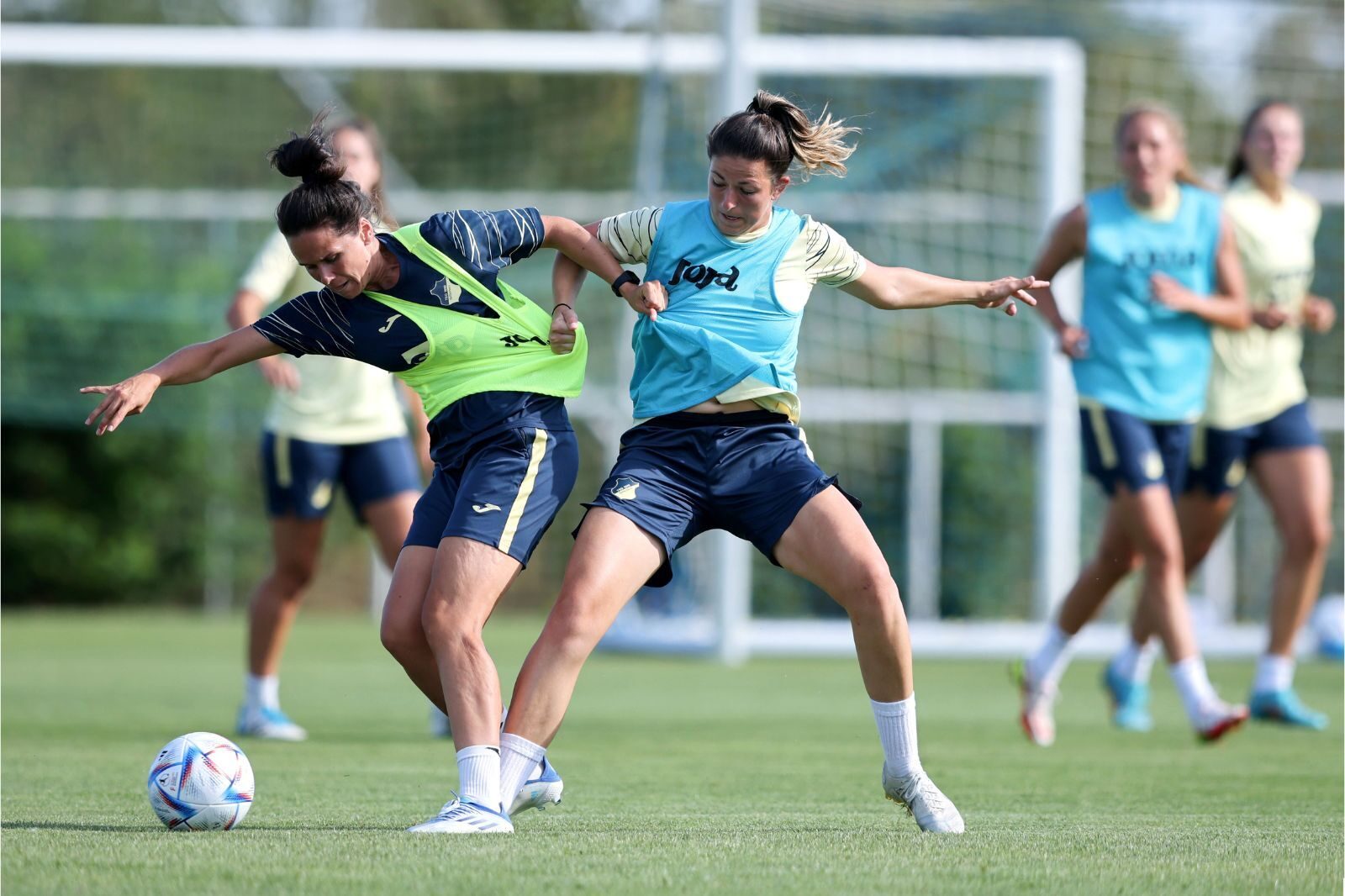What's Still Missing on The Journey to Equality for Women Athletes?
Researchers from the Bundesliga club, TSG 1899 Hoffenheim, are conducting a study on the influence of the menstrual cycle on the performance of women athletes. Dr. Sascha Härtel and Dr. Ludwig Ruf shared insights into the research, and talked about what is still needed.

The motivation behind this research is to challenge the status quo. It turns out most sports studies and methods are built around men. That means women often get left out of the equation, even though their bodies and needs can be totally different. TSG 1899 Hoffenheim wants to change that.
Start Developing Cycle-Oriented Workouts
Hormonal Fluctuations Impact the Body
Hormonal fluctuations can significantly affect athletic performance. They can even contribute to injuries such as ACL tears, which occur more frequently among female athletes. This project aims to safeguard against such injuries by understanding and accounting for these fluctuations.
Dr. Ruf, a sports scientist and strength and conditioning coach at TSG 1899 Hoffenheim, explains the importance of this research. “We want to understand the methods to measure these things and then to see what kind of influence it has at different stages of physical performance,” he says. “How can this status impact the acute responses to strength training, for example?”
Take an exclusive, behind-the-scenes look at the pioneering partnership between KINEXON Sports and TSG 1899 Hoffenheim.
Why We Need Scientific Guidelines

Dr. Ruf says that the scientific community is not there yet. “These scientific guidelines are not there yet, and we have to develop them first,” he admits. But he is optimistic about the potential impact of this research. “If we do appropriate and good studies, it has a huge impact on the female side. They deserve to have the same condition as we have essentially.”

“These scientific guidelines are not there yet, and we have to develop them first.”
KPIs Play Critical Role for Women Athletes

Dr. Härtel, the Head of Performance Diagnostics and Science Coordination at TSG 1899 Hoffenheim, sheds light on the role of Key Performance Indicators (KPIs) in this project.
“We got an idea which KPI correlates, which show you some mechanical load, which show you some metabolic load, and so on,” he explains.
“We know that (development) is different in boys and in girls,” he said. “But measuring it and having this information for every player male and female makes a big impact in that it makes it much easier to set up meaningful training sessions, for example.”

“You need to start somewhere, and you need to collect and get some experience. The devices get better. The information gets better, and you need to try to create a larger picture and collect meaningful data and try to answer the questions.”
Breaking New Ground in Women's Football

TSG 1899 Hoffenheim is also conducting a study on the menstrual cycle with their female team. Dr. Härtel noted that there is lack of scientific research in this area. However, Hoffenheim has the resources, background, and commitment from the club to explore this topic further. “Our goal is to better understand the differences between males and females, ultimately improving our training and development processes,” he said.
Dr. Härtel acknowledges that there are still many unanswered questions. “We are still seeking a lot of answers,” he says. “You need to start somewhere, and you need to collect and get some experience. The devices get better. The information gets better, and you need to try to create a larger picture and collect meaningful data and try to answer the questions, but it’s a long way to go.”

Dr. Ruf emphasizes the need for extensive data collection over many years to analyze how various phases of the menstrual cycle impact female athletes’ performance. The focus lies on developing accurate measurement methods to understand these effects and explore their influence during different stages of physical performance. Additionally, this understanding can shed light on how menstrual status might impact acute responses to activities like strength training.
Dr. Härtel has said all along that breaking new ground in football is part of TSG 1899 Hoffenheim’s DNA “For many years now, TSG 1899 Hoffenheim has played a pioneering role in the analysis and development of its players through sports science, often using innovative new methods and technologies.”
The Future of Women’s Sports is Here!

This research represents a significant step forward in the recognition and understanding of the unique challenges faced by female athletes. It’s a long journey, but one that promises to revolutionize the future of women’s sports.
TSG 1899 Hoffenheim is using sports data and analytics not only to enhance the performance of their professional teams but also to optimize their Academy’s training programs for young players. In the latest episode of “The Xtra Edge” podcast, Dr. Härtel and Dr. Ruf discussed the player metrics they prioritize and the data-driven adjustments they’ve implemented in their training methodologies over the years.
If you’d like to learn more about using demand planners to manage the workload of women athletes, check out our free guide by clicking the link below.














